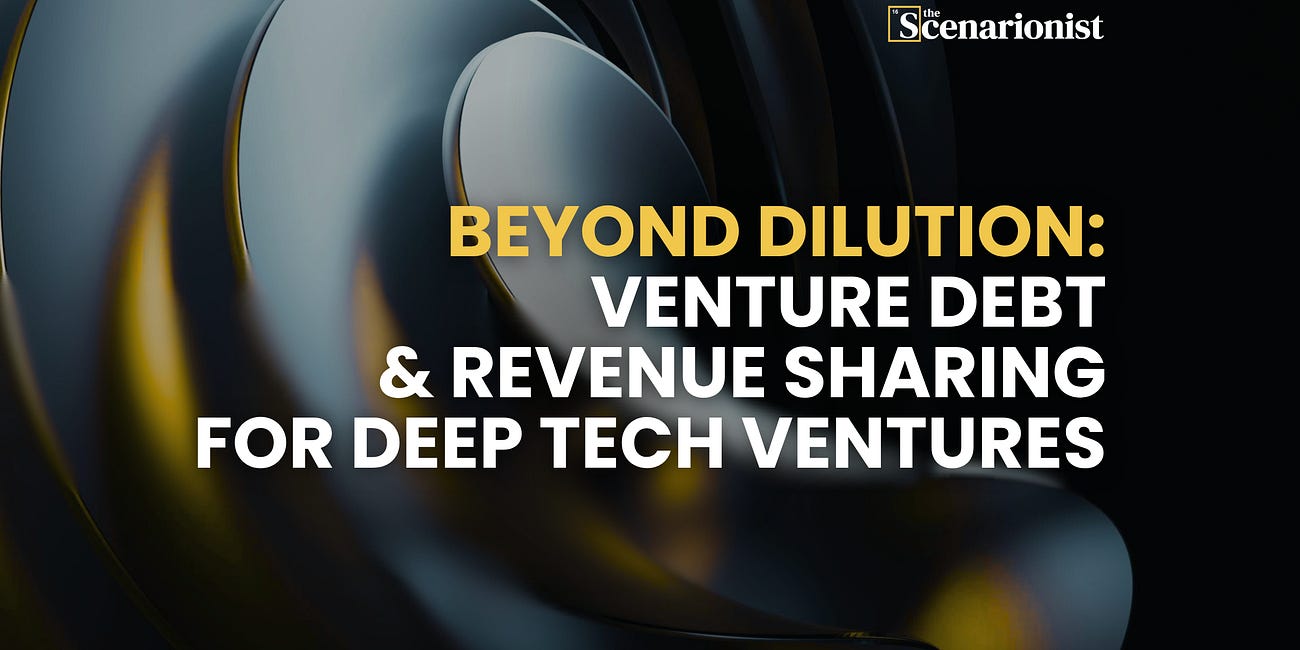⚛️ Fission Goes Factory-First; ⚡AI Chases Electrons; 🛰️ Space as Utility; 🔌 GPUs Need Grid Ties & more | Deep Tech Briefing #83
Weekly Intelligence on Deep Tech Private Markets.
Welcome back to Deep Tech Briefing — the weekly space by The Scenarionist where we analyze and discuss the key events of the week shaping Deep Tech Private Markets.
In Today’s Briefing:
Lite Edition (Free)
Roundup
Interesting Reading
Full Edition (Premium)
The Big Idea:
Space Stays Hot: $3.5B in Q3 Shows Dual-Use Is the De-Risker
The Key Updates:
From a West Texas AI power build to a Tennessee reactor factory and London robotaxis, space relays, lunar freight, and a secondaries shake-up rewire the industrial stack—and more
Signal in the Data:
Reading the 2025 IPO trickle through an industrial lens
Deep Tech Power Play:
From Europe to Australia, from the UK to the US — protected steel, accelerated defense, microreactors, green talent, and plant proteins.
Roundup
Dear Friends, welcome back to Deep Tech Briefing!
Another week, another reminder that the next leg of “AI” is less about models and more about metal. The most consequential headlines weren’t algorithmic; they were about electrons, megawatts, and throughput.
Hyperscale compute is chasing cheap, firm power and fast interconnects, pulling data centers toward energy basins and away from coastal vanity sites.
That re-centers value on grid ties, high-capacity switchgear, thermal envelopes, and the dull-but-critical logistics of moving megawatt-hours on time. The investable edge isn’t a bigger GPU; it’s the substation that energizes it.
Defense and space continued to normalize as procurement categories, not science projects. Multi-year programs on both sides of the Atlantic are hardening demand for sensing, resilient connectivity, and ground automation.
The dominant bottleneck is now terrestrial: tasking pipelines, spectrum, and downlink orchestration. When orbital assets behave like industrial networks, the profit pool migrates to software that reconciles timing, coverage, and SLAs across heterogeneous fleets. Dual-use is not a slogan; it’s a revenue calendar.
Fission logged tangible steps from factory to field. The center of gravity is shifting from bespoke prototypes to repeatable units—smaller footprints, standardized QA, and siting that aligns with interconnection reality.
Parallel experiments at the frontier—subsurface deployment, campus-scale pilots—aim to compress permitting friction by making nuclear look like infrastructure, not a megaproject. Fusion, meanwhile, is splitting the difference between European blueprinting and American optimization, with AI-driven control and simulation nudging timelines forward at the margin. The through-line is execution capacity: welders, inspectors, and HV technicians matter as much as superconductors.
Public markets cracked the door open just enough to tempt a few hardware names testing investor appetite for regulated timelines and certification risk. The bar is simple, if unforgiving: contracted revenue, transparent unit economics, and a credible path to cash flow. While that window calibrates, secondaries and structured rounds are providing interim price discovery and recycling proceeds into buildouts.
Policy kept tightening around reindustrialization. Europe’s coordinated defense posture and industrial guardrails, the U.S. push for assured on-base power, and the UK’s workforce initiatives collectively sketch a durable demand map. Regional dynamics in advanced manufacturing and ag-tech point to a broader reshoring arc: shorter supply chains, higher quality standards, and compliance treated as a product feature.
The practical takeaway is straightforward. Underwrite certification gates with milestone debt and performance wraps; treat interconnect slots as inventory; price export controls and spectrum constraints into base cases, not footnotes; and assume skilled labor is the rate limiter, requiring investment in training, robotics, and guided workflows.
You’re reading the Lite edition of Deep Tech Briefing. For a full view of the week’s key developments across new breakthroughs, permits, industrial partnerships, IPO signals, and policy shifts shaping the deep tech landscape, unlock the full version here.
Enjoy the read!
- Giulia
✨ For more, see Membership | VC Guides | Insights | Rumors | Exit
Beyond Dilution: Venture Debt & Revenue Sharing for Deep Tech Ventures | The Scenarionist
In a market that prizes prudence, capital design can be an edge. Pairing equity with non-dilutive instruments can support milestones and preserve room to maneuver. See how venture debt and revenue-linked capital can fund equipment, pilots, and GTM while keeping founders—and early believers—meaningfully in the money.
🔶 Interesting Reading:
Corporates should bet on the future, not wait for it. Stop piloting, start buying: how offtakes de-risk deeptech Capital Brief — Corporates can mint markets by pre-committing demand—turning cautious procurement into venture-grade leverage.
Can Germany really re-ignite Europe’s startup engine? Invezz — Momentum, policy fixes, defense/AI tailwinds—enough fuel to outpace the UK, or another head fake?
How a Boom in Fusion Companies Could Speed Up the ‘Energy of the Future’ Newsweek — Private funding swells, power-hungry data centers circle—are pilot plants finally within striking distance?
Why Nestle just walked away from the global dairy-methane pact Reuters — A big climate coalition loses a marquee member—what changed, and what does it signal for ag-emissions strategy?
Starlink or sovereignty? Inside the UK’s new satcom red lines Satellite Today — Defense leaders love LEO speed—but where do you draw the line on single-vendor reliance and sovereign ground control?
Sequoia × MUBI: the contrarian content-plus-AI bet most VCs missed PitchBook News — Indie cinema, algorithmic curation, and a platform play—why this deal could age better than it looks.
Hot hydrogen at 1,000 K: the MIT membrane that could shrink plants Filtration+Separation — A re-engineered palladium “plug” stays stable at heat—if it scales, capex and footprint might not.
Post-quantum by 2030: did your security roadmap just go stale? Capital Brief — A national cyber agency draws a line in the sand—migrate now or risk “store-now, decrypt-later” bite-back.
Australia’s $1B+ rebound: signal or head-fake? Forbes Australia — Deal flow snaps back with hardware/biotech and AI in the mix—what’s durable vs. just one mega-round?






